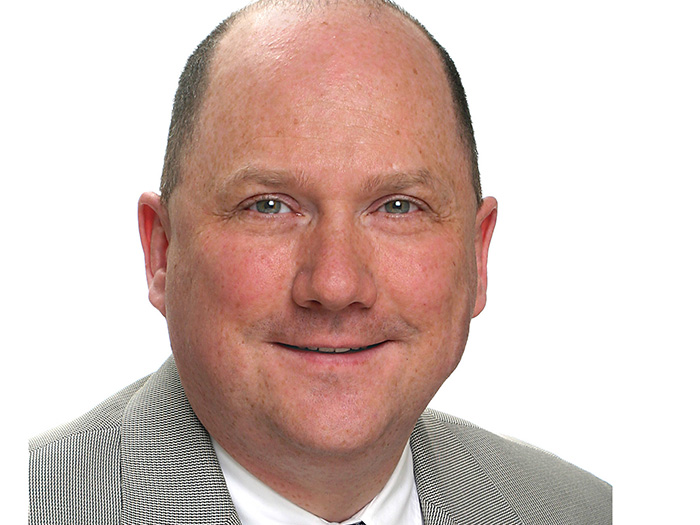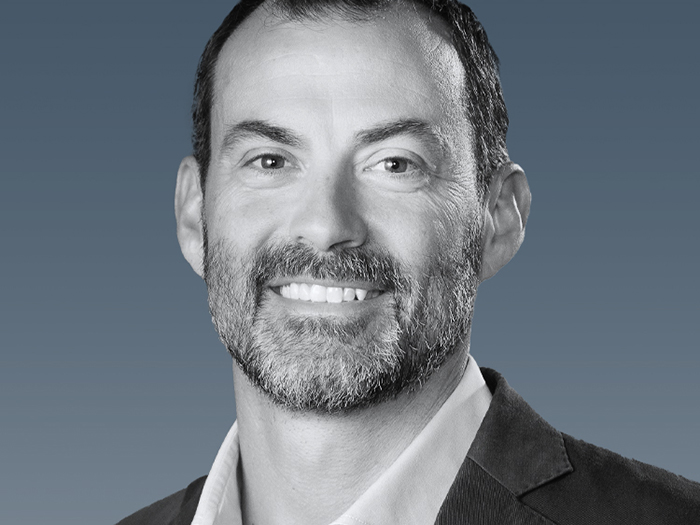10 Questions for VCIA’s New President Kevin Mead

Richard Smith, who had served as the president of the Vermont Captive Insurance Association for 12 years, stepped down in early 2022. Taking his place is Kevin Mead, a former accountant and a veteran manager of business associations.
Risk & Insurance® caught up with Mead, fresh from his attendance at the VCIA’s annual conference, to get his take on his new position. What follows is a transcript of that discussion, edited for length and clarity.
Risk & Insurance: Can you tell us more about your position with VCIA and what you see looking ahead for the organization?
Kevin Mead: It’s going to be interesting because, obviously, the conference was a resounding success. We had just under a thousand people.
The anecdotal feedback I am getting is really good, and recently, we went through the evaluations, learning what attendees strongly responded to and what areas we can improve the conference experience in.
I’ve said this before and I’ll say it again: What we did was we reproduced what was our 2019 conference in 2022, but the goalposts have moved.
We’ve got the ability and the requirement to say, “Okay, given the fact that no one was looking at virtual or hybrid in 2019, we went virtual for ’20 and ’21, back in person with no hybrid element in ’22; where do we go from here?”
What does the community need in order to get what it wants? And it was clear that, for this year, people wanted to get back together. It was like a pressure valve popping off.
One thing I’ve cautioned everyone is, we can’t just put the band back together and churn out the old hits like the Eagles do every couple of years and expect people to turn up, because people’s expectations and desires have changed.
The organizations they work in have changed, and we’ve got to get really intimate with the members and the attendees to find out how we’re going to sustain this going forward. That’s not just the conference; that’s moving into the other things we do as well, like our road shows and our webinars.
That’s the challenge for us, is don’t sit back and go, “Oh, this is great. Everybody came back, and we can just do this again in ’23, and we’ll be fine,” because, naturally, people expect improvements, and we want to surpass our 2022 conference accomplishments.
R&I: Is it fair to say that a hybrid option may be on the table for VCIA in 2023?
KM: It absolutely is because one of the issues we are facing, frankly, is capacity. Burlington does not have a dedicated convention center. We are in the biggest space that Burlington offers, and our opening reception that was in the exhibit hall was shoulder to shoulder.
Technically, we can probably accommodate 1,100 in person, but it’s going to be a squeeze, and hotel rooms were in incredibly short supply. So, we’re certainly looking at a virtual option.
We’re also looking at the potential of having a satellite option as well. We could we set up a satellite location, have two-way beaming of it so that effectively, the distant content can get beamed into Burlington; the Burlington content gets beamed to the satellite.
All options are on the table. We’ve made no decisions yet, but certainly, the options are being looked at.
R&I: How did you get involved with VCIA to begin with?
KM: I’m a recovering accountant. I’m in a 12-step program for accountancy. The first step of which is to admit that you have a problem with debits and credits. Twenty-odd years ago, I was cheerfully working as an auditor and volunteered for a professional association, and they hired me onto staff and I became an association person.
My most recent relevant history was working for an entity called PrimeGlobal. They were a group of about 300 independent accounting firms around the world that joined together to do networking, benchmarking and education.
We did seminars, conferences, had task forces on technical issues. You’re probably seeing some similarities here with what the VCIA does. We did a three-way merger with a French entity and another U.S. entity, which created PrimeGlobal from three separate entities, none of which were called PrimeGlobal before.
We moved up the league table of accounting associations. So, when VCIA was looking for someone after Rich Smith announced his leaving, I saw the announcement and thought, “Well, there’s some strong corollaries there,” and threw my hat into the ring.
R&I: What is it about doing work with associations that you find invigorating or engaging?
KM: It is invigorating and engaging. It’s the members’ association, and they feel that level of ownership, and they are passionate about providing that input.
It’s because of that ownership factor where everybody says, “This is my association, and I want to help guide it to the future.” That’s what invigorates me, is getting close to members who have that pride of ownership and contribute to building out and evolving the association in creative and robust ways.
R&I: How do you successfully take the considerations of owners into account and keep your head clear and keep moving?
KM: The underlying principle is everyone gets listened to and everyone gets understood. No matter how far-ranging their thought process, everybody’s input is valued. Because their initial thought might be off the radar, but they could lead you to something important.
Secondarily, you have the structures in place, boards and committees traditionally, that help you filter that.
That’s the process that we are going to be going through as we define where we are going in 2023 and beyond in terms of how we serve the members, is a broad net for input, filtration by the board and committees.
And then feedback to the members saying, “We heard a lot. Here are the underlying themes. Here are our strategic proposals and here are the initiatives that will now support those strategic proposals.” And getting the membership to support the plans, because they were in on the process.
The transparency of how we do things then shows that there is a clear logic to the approach we take and that member input is valued, and their input is not only valued, but it also appears in the future plans of the organization.
R&I: Given your professional background, how do you perceive the captive space? What makes it interesting to you?
KM: I notice that in the captive industry mostly everyone coalesces around their mutual understanding that captive insurance is unique and contrasts with other traditional insurance options; that a major part of the industry is educating the public and interested parties on what captive insurance actually is and how it functions.
Simply put, what I’ve discovered is people play nice in the sandbox with each other.
At the conference, a lot of external receptions were held, and I got invited to a whole bunch of them. And it was interesting that these companies were actually inviting their competitors. And of course, it may be the old maxim of keep your friends close and your enemies closer, but nonetheless, it seems like a collegial and cooperative organization and profession in that respect.
[That] trickles over into friendships.
Not even two weeks ago, Dave Provost retired as the lead regulator in the state of Vermont, and literally, on Tuesday of this week, I was invited to the DFR, his departmental party for him going, and chatted with him and his wife.
I live way up in the Northeast kingdom. I’m an hour and a half out of Burlington, but they’re going to come visit, and this is after only six months. It’s a really friendly, tight-knit group.
R&I: Now that you’re involved with VCIA, do you have it in mind to perhaps visit other domiciles or interact with other domiciles?
KM: Through CICA, there’s an informal working group of the various domiciles. We work on things that we can agree on, which are often legislative and regulatory matters.
There are others jurisdictions [that] are outliers, and we just have to agree to disagree on our respective practices, but we are sharing information on a reasonably regular basis. I’d like to see that group be more active, because each domicile brings something different to the equation.
Having a robust set of offerings across multiple domiciles, both domestic and international, is beneficial for the industry. And in some instances, Vermont will be the best choice. For other reasons, it may not be.
I’d much prefer that the company still considers looking at a captive option rather than just go, “Well, we didn’t like the look of Vermont so we’re just going to put it on the shelf and not bother.” Because again, business plans change, organizations change. We recognize that there are many other options, and we can be available as an option as business plans change.
R&I: Are there initiatives or things you got your eye on or the organization’s got its eye on? Maybe perhaps regulatory priorities or legislative priorities?
KM: Every year, Vermont enacts a captive bill and its level of intensity varies year on year. This year, the 2022 act was fairly mild. There were some changes in there, for example, really codifying what was practiced before on parametric risk contracts.
There is a meeting next week to gather the stakeholders and ask them what their input will be for the 2023 bill in Vermont. That’s a major part of what we do. We then work with the Vermont Department of Financial Regulation to hone things that they think would be valid, and then we send that package to the governor’s drafting office to start drafting a captive bill.
On top of that, we’re also working on things that are more administrative with the DFR.
There’s still a requirement in Vermont regulations for the notarization of documents. And having raised that with the state, they’ve pointed out that they have a statewide license with DocuSign, and they’re going to review the various different things that currently require notarization and see if they can’t move that into a DocuSign environment.
That’s again, direct input from members flowing through into the DFR’s administrative processes behind the maintenance and startup of a captive.
R&I: That efficiency of use is really important, isn’t it? There’s just a lot of resources that can go into that.
KM: We’re also doing the same at the federal level. We are the only domicile that retains a direct advocacy representation in Washington, D.C. and at the NAIC.
And so, we are monitoring everything from the possibility of a Pandemic Risk Insurance Act that would basically be a sequel to the Terrorism Risk Insurance Act, to cannabis legislation and whether or not financial services could be extended, including captives, into the cannabis and marijuana and hemp industries in order to ensure that they have access to financial services — which obviously goes way beyond insurance.
I make no comment on that except to say we’re monitoring it, because there would obviously be an opportunity there should that happen. And then at the NAIC, we are regularly monitoring their rule making and their modeling so that we can ensure that we have a voice in there as well.
R&I: Anything else that you wanted to add that we might not have covered yet?
KM: I do have one thing to add, which was just one of the things that we are really concentrated on is, if you were to paint it in a broad brush, it’s just the search for talent.
And then there are numerous sub-classifications under there; everything from the empowerment of females in the captive industry, which is then itself a subset of diversity, equity and inclusion [to] our desire to reach out to colleges — and we’ve previously done a really good job in Vermont.
But strategically, we’re thinking we’ve got to go beyond Vermont because part of what makes Vermont a great choice is that we’ve got this incredible infrastructure of service providers here that just doesn’t exist in other jurisdictions to the same extent that it does in Vermont.
You can find your premium finance people here. You can find your investment folks here. You can certainly find your captive managers here and your bankers here and things along those lines.
If we can’t keep that talent pool going in Vermont then either they’ll be serviced remotely, and we’ll get a diminution of the professional activity here in Vermont, or we’ll be so hamstrung by the lack of people that we’ll no longer be the best choice.
And so, I think you’re going to see a lot of initiatives from us around there; everything from more intensity in empowerment initiatives, more intensity in young professionals initiatives and things along those lines.
Because, frankly, we view that battle for talent as an existential risk, both [to] the VCIA and to the captive industry in Vermont. &










